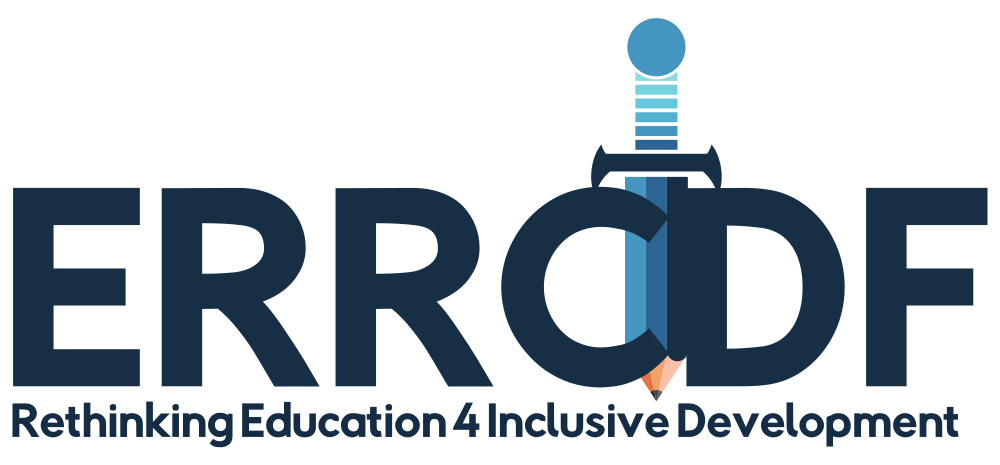Using Smartphones in Teaching English to Secondary School Students in South Africa
DOI:
https://doi.org/10.38140/ijer-2022.vol4.08Keywords:
Information communication technologies, Cell phones, teaching, learning, English language.Abstract
This study aimed to explore teachers’ experiences of using smartphones in teaching and learning English in Capricorn South Circuit, Limpopo Province. We used a qualitative research approach and adopted a case study design to conduct the study. Purposive sampling strategy was used to select data from six teachers. Data were collected through three methods, namely; interviews, observation and a reflective journal. We adopted Strauss and Corbin’s Model to analyse data. Thus, the study generated three findings: (a) reluctance among some teachers to use smartphones in teaching and learning; (b) challenges experienced at schools such as contextual factors (e.g., poor network coverage) and disruptive learners; as well as (c) strategies used by teachers to plan and implement the use of smartphones in teaching and learning to determine its success. These findings have major implications for the use of smartphones in teaching English in schools. Therefore, the study recommends that there be training for teachers regarding the use of smartphones in teaching. Additionally, the study recommends that the school management should be supportive and actively involved in the implementation of using of smartphones for teaching and learning in schools. In conclusion, teachers should ensure that timeous and thorough planning is done to ensure success if the use of smartphones is to succeed. This study is significant because it emphasises the need for a shift in teaching from a teacher-centred approach to a learner-centred approach that incorporates the use of technology in classroom.
References
Agyei, D., & Voogt, J. (2012). Developing technological pedagogical content knowledge in pre-service mathematics teachers through collaborative design. Australasian Journal of Educational Technology, 28(4). https://doi.org/10.14742/ajet.827
Al-karasneh, S. (2014). Reflective journal writing as a tool to teach aspects of social studies. European Journal of Education, 49(3), 395-408. https://doi.org/10.1111/ejed.12084.
Bharti, P. (2014, July 21). Tech-savvy teachers talk less about technology and more about teaching. Retrieved from EdTechReview: https://edtechreview.in/trendsinsights/insights/1309-tech-savvy-teachers-talk-less-about-technology-and-moreabout-teaching
Braun, V., & Clarke, V. (2013). Successful qualitative research: A practical guide for beginners. Sage.
Brinkerhoff, J. (2006). Effects of a long-duration, professional development academy on technology skills, computer self-efficacy, and technology integration beliefs and practices. Journal of Research On Technology In Education, 39(1), 22-43. https://doi.org/10.1080/15391523.2006.10782471
Butler-Adam, J. (2018). The Fourth Industrial Revolution and education. South African Journal of Science, 114(5/6). https://doi.org/10.17159/sajs.2018/a0271
Chaka, J., & Govender, I. (2017). Students’ perceptions and readiness towards mobile learning in colleges of education: a Nigerian perspective. South African Journal of Education, 37(1), 1-12. https://doi.org/10.15700/saje.v37n1a1282
Charbonneau-Gowdy, P. (2015). It takes a community to develop a teacher: Testing a new teacher education model for promoting ICT in classroom teaching practices in Chile. Electronic Journal of e-Learning, 13(4), 237-249. https://www.learntechlib.org/p/160779/.
Costley, K. C. (2014). The positive effects of technology on teaching and student learning. Arkansas Tech University.
Czerniewicz, L., & Brown, C. (2014). The habitus and technological practices of rural students: a case study. South African Journal of Education, 34(1), 1-14. https://doi.org/10.15700/201412120933
Desai, M.S., Hart, J., Richards, T.C. (2008). E-learning: Paradigm shift in education. Education 129(2), 327–334.
Darong, H. C., & Niman, E. M. (2021). Indonesian online learning in new normal under COVID-19: from traumatic to intimacy. Cendekia: Jurnal Pendidikan Dan Pembelajaran, 15(1), 15-27. https://doi.org/10.30957/cendekia.v15i1.651
Elliott, S. N., Kratochwill, T.R.L., & Travers, J. F. (1999). Educational psychology: Effective teaching effective learning.
Gall, M.D., Gall, J.P., & Borg, W.R. (2007). In Burvikovs AE. Educational Research: An Introduction (Eighth ed.). Boston, Massachusetts: Pearson Publishing Allyn and Bacon.
Gredler, M.E. (1997). Learning and instruction: Theory into practice. Merrill Pearson Publishers.
Godwin-Jones, R. (2017). Smartphones and language learning. Language Learning and Technology, 21(2), 3-17. https://dx.doi.org/10125/44607
Hattie, J. & Yates, G.C. (2013). Visible learning and the science of how we learn. Routledge. https://doi.org/10.4324/9781315885025
Hashemi, M., & Ghasemi, B. (2011). Retracted: Retraction notice to using mobile phones in language learning/teaching. Procedia - Social and Behavioral Sciences, 15, 2947-2951. https://doi.org/10.1016/j.sbspro.2011.04.220
Huk, T. (2012). Opportunities and risks of the use of the mobile phone in the process of education. The New Educational Rewiev, 30(4), 249-258.
Jansen, J.D. (2000). How higher education has changed: new opportunities (and threats) for high school graduates. New Agenda (1), 65-67
John,V. (2012,April 12).iPads bring ‘new attitude to learning at schools. Mail &Gaurdian. https://mg.co.za/article/2012-04-02-ipads-bring-new-attitude-to-learning-at-schools/
Kalpana, T. (2014). A Constructivist Perspective on Teaching and Learning: A Conceptual Framework. International Research Journal of Social Sciences, 3(1), 27-29.
Kukla, A. (2000). Social Constructivism and the Philosophy of Science. Routledge.
Leedy, D. P., & Ormrod, E.J. (2013). Strategies for analysing quantitative data. Practical research: Planning and design. Pearson.
Lusardi, P. (1996). Qualitative Research in Nursing: Advancing the Humanistic Imperative. Nursing Research, 45(1), 62. https://doi.org/10.1097/00006199-199601000-00014
Mavhunga, F. Z., Kibirige, I., Chigonga, B., & Ramaboka, M. (2016). Smartphones in public secondary schools: Views of matric graduates. Perspectives in Education, 34(3), 72-85. https://doi.org/10.18820/2519593X/pie.v34i3.6
Mcnulty, N. (2017). How edtech can equip learners with the right skills for the 4th industrial revolution. Retrieved from https://www.niallmcnulty.com/2017/08/how-edtech-can-equip-learners-with-the-rightskills-for-the-4th-industrial-revolution/
McMillan, J., & Schumacher, S. (2014). Research in Education. New Jersey: Pearson Education.
Modipane, M., & Themane, M. (2014). Teachers’ social capital as a resource for curriculum development: lessons learnt in the implementation of a Child-Friendly Schools programme. South African Journal of Education, 34 (4), 1-8. https://doi.org/10.15700/201412052105
Mokoena, M. D. (2013). Implementation of no-fee schools’ policy: a case study in Bolobedu Cluster Circuits of Mopani District (Doctoral dissertation, University of Limpopo).
Niederhauser, D. & Stoddart, T. (2001). Teachers’ instructional perspectives and use of educational software. Teaching and Teacher Education, 17(1), 15-31. https://doi.org/10.1016/s0742-051x(00)00036-6
Onwuegbuzie, A., & Leech, N. (2007). A call for qualitative power analyses. Quality &Amp; Quantity, 41(1), 105-121. https://doi.org/10.1007/s11135-005-1098-1
Ornstein, A., Pajak, E., & Ornstein, S. (2011). Contemporary issues in Curriculum (5th ed.). Pearson publications.
Ortlipp, M. (2015). Keeping and using reflective journals in the qualitative research process. The Qualitative Report. https://doi.org/10.46743/2160-3715/2008.1579
Patel, P. (2012). Use of information technology in teaching learning process of education. Paripex - Indian Journal of Research, 3(2), 23-25. https://doi.org/10.15373/22501991/feb2014/8
Raihan, M. A., & Lock, H.S. (2010). Technology integration for meaningful learning -the constructivist view. Bangladesh Educational Journal, 11(1), 17 -37.
Ranasinghe, A. I., & Leisher, D. (2009). The benefit of integrating technology into the classroom. In International Mathematical Forum (Vol. 4, No. 40, pp. 1955-1961). https://citeseerx.ist.psu.edu/viewdoc/download?doi=10.1.1.673.2253
Schreiber, L., & Valle, B. (2013). Social constructivist teaching strategies in the small group classroom. Small Group Research, 44(4), 395-411. https://doi.org/10.1177/1046496413488422
Tagliamonte, S., & Denis, D. (2008). Linguistic ruin? lol! instant messaging and teen language. American Speech, 83(1), 3-34. https://doi.org/10.1215/00031283-2008-001
Trucano, M., Liu, J., & Iglesias, C.J. (2012). Surveying Mobile Learning Around the World (part one). https://blogs.worldbank.org/edutech/unesco-mobile-learning-series
Uslu, O., & Bumen, N.T. (2012). Effects of the professional development program on Turkish teachers: Technology integration along with attitude towards ICT in education. Turkish Online Journal of Educational Technology-TOJET, 11(3), 115-127
Valk, J., Rashid, A., & Elder, L. (2010). Using mobile phones to improve educational outcomes: An analysis of evidence from Asia. The International Review of Research in Open and Distributed Learning, 11(1), 117. https://doi.org/10.19173/irrodl.v11i1.794
Van Weert, T.J. (Ed.). (2005). Education and the knowledge society: information technology supporting human development, (Vol. 161). Springer.
Vosloo, S. (2009). The effects of texting on literacy: Modern scourge or opportunity. Shuttleworth Foundation, 2-6. https://citeseerx.ist.psu.edu/viewdoc/download?doi=10.1.1.175.2588
Vygotsky, L. (1978). Interaction between learning and development. Readings on the development of children, 23(3), 34-41.
UNESCO. (2013). Information and communication technology (ICT) in education in five Arab states: A comparative analysis of ICT integration and e-readiness in schools in Egypt. Jordan, Oman, Palestine and Qatar. http://www.uis.unesco.org
Wood, C., Jackson, E., Plester, B., & Wilde, L. (2009). Children’s use of mobile phone text messaging and its impact on literacy development in primary school. British Educational Communications and Technology Agency 2(1), 582-591.
Downloads
Published
How to Cite
Issue
Section
License
Copyright (c) 2022 Viloshni Bejrajh, Mahlapahlapana Themane

This work is licensed under a Creative Commons Attribution-NonCommercial-NoDerivatives 4.0 International License.










